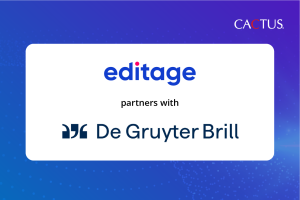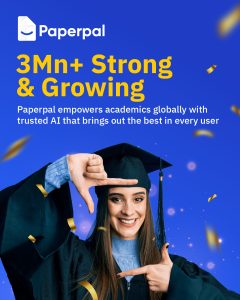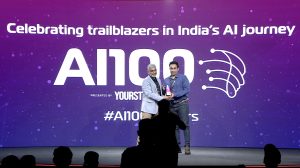If academic platforms are built for researchers, why do researchers still experience frustration while using and navigating them? Even in today’s digital-first world, many academic platforms remain misaligned with what researchers or users really need. Users often report difficulty accessing what they need and when they need it. To quote a report that interviewed researchers and librarians around the world, “no matter where you are, it’s still not always easy to find and access what you need.” Let’s take literature search and discovery for example. A 2021 survey found that 29% of faculty begin a literature search in Google Scholar, 17% in a general web search, and only 14% in their library site or catalogue—publisher sites didn’t even make the list.
These instances also speak to a deeper issue that most platforms still aren’t designed with accessibility in mind even though conversations around accessibility have been in the spotlight, especially with the European Accessibility Act (EAA) taking effect in June 2025. EAA requires all digital publishing platforms operating in the EU to meet strict design and functionality standards, including keyboard navigation, screen-reader support, and descriptive alt text. Beyond compliance, it is also about building platforms that are usable by all. Today, designing and optimizing platforms centered around publishers’ priorities and internal workflows is no longer viable. A researcher-centric approach is critical to keeping academic platforms relevant in a rapidly evolving research ecosystem.
What does it really mean to make a platform researcher-centric?
The term gets thrown around a lot, often as shorthand for better user interfaces. When a platform genuinely understands and reflects the way researchers work, it doesn’t just improve usability; it can change what is possible. A researcher-centric system can save time, surface relevant insights faster, and can better adapt to the many different ways researchers around the world discover, understand, and share information.
New developments in AI can offer ways to align more closely with these researcher priorities. Not just by automating, but by reducing friction where it matters most. AI-powered tools have the potential to reshape some of the core interactions that define the researcher’s experience. Take the “search” function, for instance. It’s no longer just typing a keyword into a box—it’s now a whole conversation. And catching up on a new research article doesn’t have to mean wading through a wall of text anymore; it might mean reading a simplified summary, consulting a visual abstract, or even listening to the paper. Researchers aren’t just looking for information; they expect to grasp it quickly, clearly, and in ways that suit their needs.
In a session on “Revolutionizing Scholarly Publishing: Practical Applications from the CACTUS AI Solutions Playground,” at the Society for Scholarly Publishing’s 47th Annual Meeting in Baltimore, Chirag Jay Patel, Head of Sales and Business Development, Americas, at CACTUS, explored real-world applications from CACTUS’ suite of AI Solutions in optimizing academic platforms.
During his talk, Chirag introduced CACTUS’s concept extraction tool. What it does, for instance, is take a research abstract, identify the key terms within it, and connect those terms to related ideas. He explains, “It takes a document. It looks at what terms, what concepts, what keywords are mentioned within it. And it maps that, and it matches it to other similar concepts and keywords.” This matters because it’s closer to how researchers actually think. When someone’s working on a topic, they’re not just searching for one keyword; they’re thinking about related ideas, overlapping terms, and the bigger picture. This tool supports that by organizing content in a way that mirrors a researcher’s mental map of a field. For publishers, it can help create a detailed taxonomy or expand an existing one. That makes it easier to build topic-based collections and improve search recommendations and discovery.
One of the more interesting takeaways from the session was how publishers can treat accessibility not as a checklist item, but as a default setting. For instance, instead of incorporating alt text or language features after the fact, these capabilities can be built directly into the core of the platform experience. For instance, CACTUS’ Multi-Lingual Audio tool can convert research content into audio format in different languages, expanding how users can engage with research. Chirag highlights, “This fits in really, really nicely with accessibility. It also fits in very nicely with global expansion of your audience. So, if you operate in the US, great—English is fine. But if you’re looking at markets like China, Saudi Arabia, Indonesia, Brazil, you’re going to need to be able to provide that content in different languages.” Continuing with the theme of accessibility, another tool showcased during the session is the Alt Text generator, which, rather than guessing what an image represents, looks at the full context of the manuscript, surrounding captions and paragraphs, and technical vocabulary, to create meaningful, accurate descriptions. It even tailors the alt text for different uses, such as academic publishing, social media, or marketing. But the goal of accessibility cannot be met without actually making research content accessible. This leads us to the AI Summary tool, which allows users to simplify dense academic research into clear, jargon-free language, without losing scientific rigor. This can drive greater research visibility and impact by supporting deeper engagement, regardless of a user’s background or level of expertise. This is one more way academic platforms can meet researchers’ needs, by reducing the cognitive load and making accessibility and easy comprehension part of the design.
These solutions aren’t just “add-ons,” they represent what’s possible when academic platform centers researchers’ needs and global accessibility. To dive deeper into the session insights, you can watch the full presentation here.
Researcher-centricity isn’t a trend. It’s a necessary shift. Whether it is discovery, submission, accessibility, and platform experience, researchers want tools that work the way they do and reflect how research is consumed and shared today. Closing the gap between researcher needs and scholarly infrastructure starts with shifting the frame: from asking “What do we offer?” to “What do researchers actually need?” Everything else follows from there.
Build platforms that put researchers first. Explore how CACTUS AI Solutions can help. Contact us to get started









